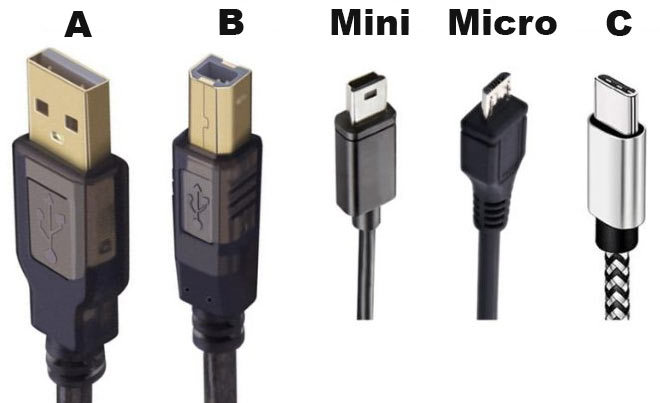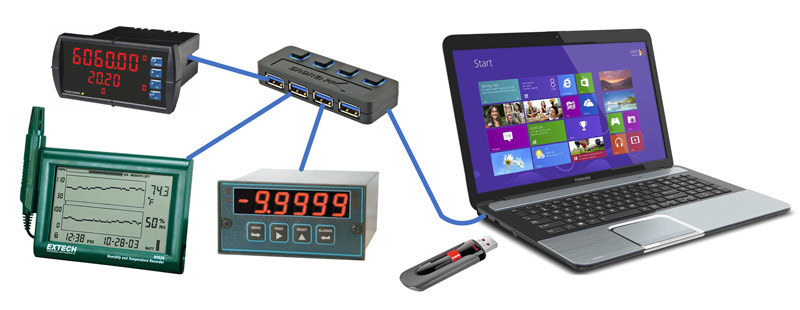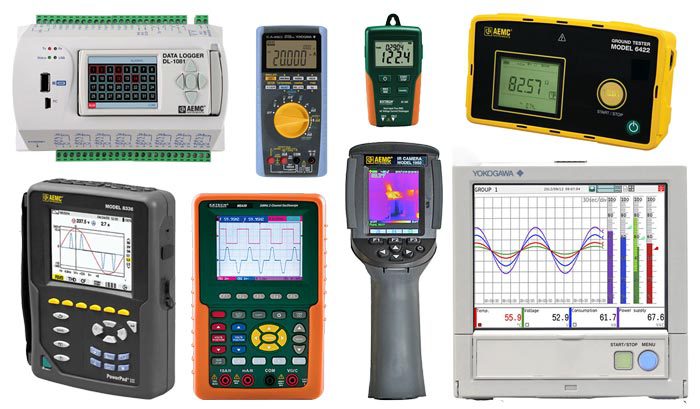The Universal Serial Bus (USB) originated in 1996 as a way to connect peripherals, such printers and scanners, to a personal computer. Since that time, it has evolved into a broadly used interface on a wide variety of products.
USB has a number of advantages over other serial interfaces. A USB network is simple to assemble and use. Most devices are self-configuring, making them essentially plug-and-play. USB allows hot-swapping, which is convenient for mobile peripherals (particularly flash drives) and important for systems that can’t be shut down. USB is backward compatible. Devices implementing later releases of the USB standard also work with products designed to earlier revisions. Finally, USB is low cost. Products and accessories are readily available. USB certification assures compatibility between devices from different manufacturers.
Evolution
The USB standardization effort began in 1995, when 7 companies agreed to develop a specification to replace the numerous serial and parallel interfaces then in use. Version 1.0 was released in 1996, with a 1.5Mbit/sec speed over a 3m cable. Connectors were defined as USB-A for the computer and USB-B for the peripheral. Only a few products were introduced to the 1.0 specification. Various technical issues were resolved over the next 2 years and revision 1.1 was issued in 1998. It included a useable 12Mbit/sec full-speed mode, over a maximum 5m cable. This version was implemented in many products.
 USB 2.0 was released in 2001. It defined a high-speed mode with a maximum transfer rate of 480Mb/sec. This revision also standardized the USB-Mini and USB-Micro connectors for use on cameras, phones, and other small devices. The next major upgrade occurred in 2008 with the release of USB 3.0. This revision included a 5Gb/sec super-speed mode, with modified A, B, and Micro connectors to support this transfer rate. The new A style connector is identified by a blue insulator (instead of white). The B and Micro styles have an additional connector section. Maximum speed increased to 10Gb/sec with USB 3.1 in 2013, and 20Gb/sec with USB 3.2 in 2017.
USB 2.0 was released in 2001. It defined a high-speed mode with a maximum transfer rate of 480Mb/sec. This revision also standardized the USB-Mini and USB-Micro connectors for use on cameras, phones, and other small devices. The next major upgrade occurred in 2008 with the release of USB 3.0. This revision included a 5Gb/sec super-speed mode, with modified A, B, and Micro connectors to support this transfer rate. The new A style connector is identified by a blue insulator (instead of white). The B and Micro styles have an additional connector section. Maximum speed increased to 10Gb/sec with USB 3.1 in 2013, and 20Gb/sec with USB 3.2 in 2017.
The USB-C connector was developed in 2014 to handle the increased speed of USB 3.1 and simplify the connection of different devices. Unlike previous connectors, it was made reversible, for improved reliability and ease of use. The USB-C specification defines both the connector and cables. USB-C is now the preferred connector for all devices, regardless of type or speed. This includes USB 4 products operating at 40Mb/sec or more. This also includes Apple products that use a Lightning connector for their serial interface. The European Union has recently mandated that they change to USB-C.
Structure
A USB system consists of a host with one or more USB ports, and peripherals connected in a star configuration. The use of USB hubs and multiple USB controllers in a host allow a USB system to include hundreds of devices. However, the typical system will have just a few peripherals.
The USB device starts by sending a class code to the host. This allows the host to load software modules for the device and to support new devices from different manufacturers. Common classes include printer, scanner, keyboard, mouse, flash drive, microphone, fingerprint reader, Bluetooth adapter, and RS232 adapter.
Power
USB 1.1 and 2.0 peripherals can draw up to 100mA at 5V for a low-power device and 500mA at 5V for a high-power device. The computer or host must supply this current, which is sufficient to operate many products. In battery charging mode, the peripheral can draw up to 1.5A at 5V. This is typically sourced by a dedicated charger rather than a host computer. Under USB 3.0, a new class of superspeed device was defined, with a maximum current consumption of 900mA. The USB-C specification created a fast-charging mode (3A at 5V) and a special Power Delivery mode that can provide more than 100W to some devices (5A at 20V or 5A at 48V). Note that not all cables with a USB-C connector support the higher current modes or the maximum USB 3.x and USB 4 speeds.
Instrumentation
The simplest USB system for measurement and control uses a host computer with one instrument. In monitoring applications, the host pulls readings from the instrument. The host may also send setup instructions to the instrument. For many instruments with a USB interface, the manufacturer provides software (typically Windows-compatible) so a new user can quickly perform these basic operations. The speed of USB 2.0 is sufficient for most process instruments.
 Multiple USB instruments can be connected directly to the host if it has a sufficient number of USB ports. If not, a USB hub easily expands the available ports. Shown here are three USB 2.0 instruments interfaced to the computer through a 4-port USB 3.0 hub. A USB 3.0 flash drive plugs directly into a second USB port on the host computer.
Multiple USB instruments can be connected directly to the host if it has a sufficient number of USB ports. If not, a USB hub easily expands the available ports. Shown here are three USB 2.0 instruments interfaced to the computer through a 4-port USB 3.0 hub. A USB 3.0 flash drive plugs directly into a second USB port on the host computer.
USB is also a convenient interface for servicing instrumentation that is part of an automation network. Typically, RS-485 or Ethernet is used for the network interface. A second serial port implements the USB protocol for service access. The technician temporarily connects a laptop computer to this port. In many cases, monitoring the instrument performance, extracting saved data, or reconfiguring the unit can be done without disconnecting from the network.
 Portable test equipment may also incorporate USB as a convenient interface for transmitting test results and saving test configurations. Shown here (clockwise from upper left) are a USB-compatible data logger, multimeter, power tester, ground resistance tester, recorder, thermal camera, oscilloscope, and power quality analyzer. Some of these models can also act as a host, storing information directly to a USB flash drive (memory stick).
Portable test equipment may also incorporate USB as a convenient interface for transmitting test results and saving test configurations. Shown here (clockwise from upper left) are a USB-compatible data logger, multimeter, power tester, ground resistance tester, recorder, thermal camera, oscilloscope, and power quality analyzer. Some of these models can also act as a host, storing information directly to a USB flash drive (memory stick).
USB has seen wide acceptance on consumer products. Its versatility, affordability and performance also make it suitable for measurement and control applications. For a more detailed description of USB, see the Wikipedia article or the USB Forum. For assistance in selecting USB instruments for a M&C application, contact a Weschler Measurement Specialist.
